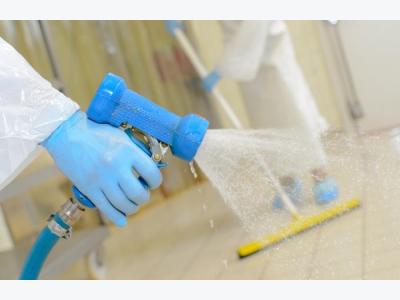Improper water use can lead to food safety risks

While cleaning meat and poultry plants, spraying too much or at a pressure that is too high can create problems instead of prevent them
While spraying down meat and poultry processing equipment may seem to be a good way to keep the plant clean and reduce the incidence of pathogens, if done improperly it could do more harm than good.
Speaking at the 2017 International Production & Processing Expo (IPPE) on January 31, Steve Tsuyuki, Maple Leaf Foods’ senior director of sanitary design and corporate sanitation, discussed how more attention to detail when sanitizing plants is mandatory in assuring the products to come out of those plants are safe for the consumers.
Scrape before you spray
Tsuyuki, during the talk “Process Based Sanitation Best Practices,” cautioned about the risks of being too anxious to pick up the hose when it comes to sanitizing the plant.
When a plant worker sees meat residues on processing equipment or on the floors, sanitarians should think twice before hosing it away.
“It’s way better to before you pick up the hose to pick up the shovel,” he said. “It takes very little effort to scape eat when it’s dry to collect it and deal with it than to basically liquefy it and spray it all around.”
Moderate water pressures
Tsuyuki also cautioned against spraying where the water pressure is set too high. It is not uncommon for debris to be sprayed in places that it shouldn’t be with high pressures.
He cited one example when debris was pushed into a junction box, and when there were incidences of Listeria, it was determined that the debris within that box was the source.
Roy Graber is a staff reporter at WATT Global Media
Có thể bạn quan tâm
 All disease begins in the gut
All disease begins in the gut Post-weaning gaps in piglets can easily take 7 to 10 days. Some well-managed farms, however, can contain this to 1 or 2 days.
 Feed measures to reduce losses of zinc and copper
Feed measures to reduce losses of zinc and copper Zinc and copper have a broad range of physiological functions and are needed for a range of biological functions. However they can be found in high levels
 New tool to make poultry sector climate-friendly
New tool to make poultry sector climate-friendly A new and interactive tool released by FAO allows farmers, policy makers and scientists to calculate meat, milk and eggs production